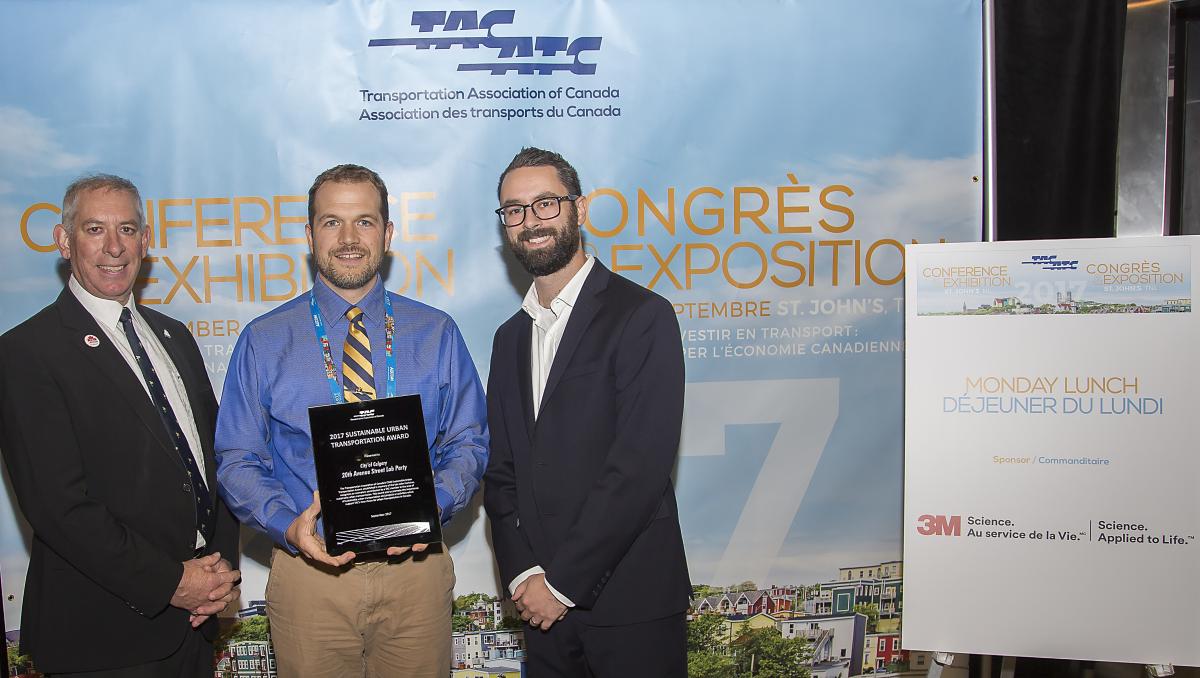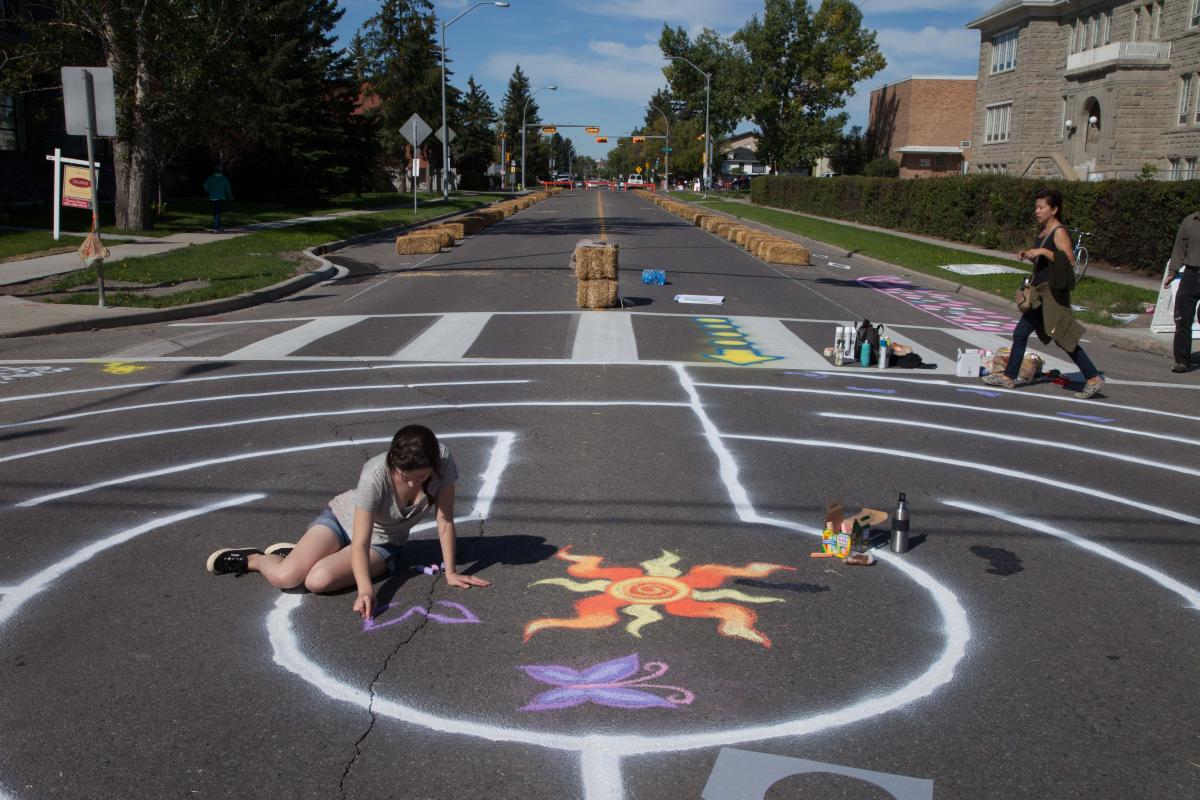The City of Calgary’s 20 Avenue Street Lab Party has been named the Transportation Association of Canada’s (TAC) Sustainable Urban Transportation Award recipient for 2017.
This award recognizes exemplary contributions to the development and enhancement of urban transportation, as well as transferability to other communities.

Winner of the TAC Sustainable Urban Transportation Award: Dale Lynch, City of Calgary (centre); Paul Lafleche, TAC President (left); Don Boccabella, 3M Canada (right).
On August 20, 2016, the City of Calgary hosted a ‘street lab party’ on 20 Avenue N. Street. The project transformed the street into a complete street configuration using temporary and permanent installations including a painted pedestrian refuge; dedicated bicycle infrastructure; a rain garden; permanent public art; food trucks and more.

Jen Malzer, Pedestrian Implementation, Liveable Streets Division for the City of Calgary, indicated that one of the objectives of the project was to engage the public using a non-traditional approach. The new approach allowed residents to experience a changed cross section and personally measure the benefits and drawbacks of a complete street retrofit as compared with a typical open house session.
“The 20 Avenue N. Street Lab Party involved piloting street enhancements using tactical urbanism principles,” explained Jen. “The opportunity was intended to allow residents to participate in the planning and execution of the improvements to determine whether the benefits and drawbacks can be more fully assessed through experiences and observed data sets as compared with more traditional engagement approaches.”
The one-day event was highly supported by community participants, local residents and businesses, and City business units. The 20 Avenue Street Lab Team, including community association volunteers, partners and City of Calgary staff, received positive feedback by families and a large number of residents who might not otherwise have had the time or the opportunity to participate in this type of event.
Planning Logistics and Measuring Success
Planning an event of this magnitude required a number of permits and permissions for closing the street, painting the pavement, and using public art. Staying open to unexpected partnerships led to a more complete event and greater community building. Some of the additional elements included an accessibility circuit with wheelchairs and black out goggles, recreation specialists who organized games, placemaking (i.e. introduced seating using cut logs, added a bicycle-powered music station and chalked the surface to soften the feel of the parking lot) and food trucks. Parking vouchers were provided to houses along 20 Avenue to help offset the negative impacts of parking restrictions.
Several activities were used to help measure the success of the event, and plan for future initiatives:
According to Jen, challenges around public engagement on complete streets projects is common across Canada.
“This project demonstrated that it is possible to engage with residents on designing and building a temporary, inclusive design and that the conversation can be highly productive and positive. In the end, the combination of activities and partners produced a sense of pride for the project team and community volunteers. There is definite appetite in Calgary to do this again.”
Before recommending the winning proposal to TAC’s Urban Transportation Council, five other submissions were evaluated by the Sustainable Transportation Standing Committee panel: High Occupancy Toll Lanes Pilot Project (MTO); Le Programme d’implantation de rues piétonnes et partagées (Ville de Montréal); Preparing for Autonomous Vehicles (City of Toronto); Réaménagement du Carrefour Henri-Bourassa Pie-IX à Montréal (Ville de Montréal); and Reimagining Young Street Class Environmental Assessment (WSP Canada).
All nominees and the winner will present their submissions during a session based on the 2017 award at the TAC Conference & Exhibition, September 24-27 in St. John’s, NL.